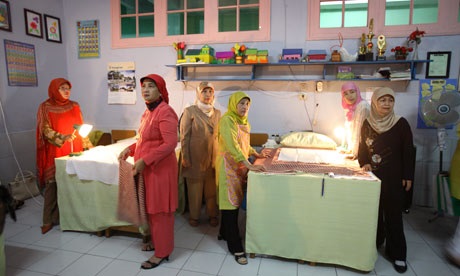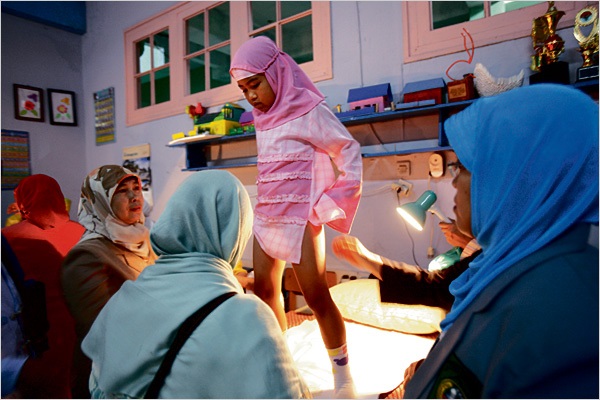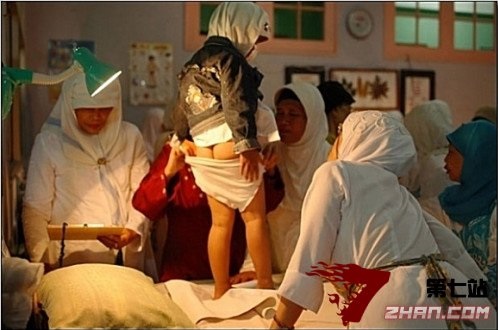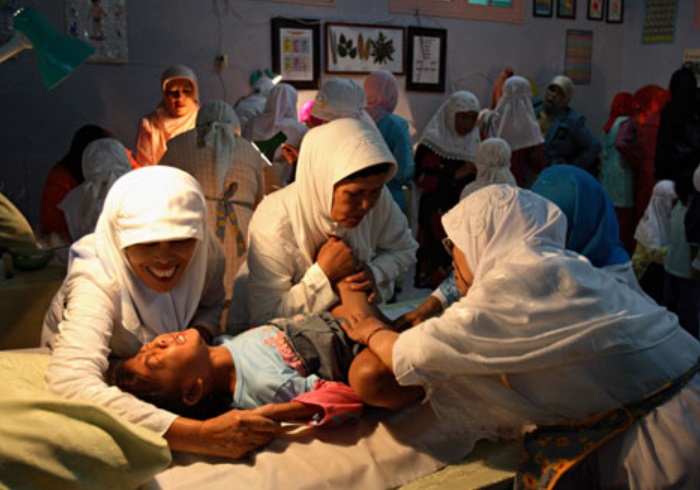Female Genital Mutilation
UTC
As a preamble to this section of CIRCLIST, it is necessary to define our use of the terms "Female Circumcision" and "Female Genital Mutilation". These phrases should
not be regarded as interchangeable. Within this website, by definition, the following distinction is made:
Female Circumcision ("Femcirc"): Surgery that modifies the female genitalia in ways likely to be accepted by a neutral observer as enhancing the quality of a woman’s sexual experience. Examples are set out
here.
Female Genital Mutilation ("FGM"): Surgery that modifies the female genitalia in ways likely to be accepted by a neutral observer as reducing the quality of a woman’s sexual experience.
Is there a discrepancy between WHO’s position and the distinction made above?
CIRCLIST may at first sight appear to be at variance with the World Health Organisation definition of Female Genital Mutilation. WHO labels as FGM "[Any procedure] involving partial or total removal of the female external genitalia or other injury to the female genital organs whether for cultural or other non-therapeutic reasons". [Source: Female Genital Mutilation - A joint WHO/UNICEF/UNFPA statement. Geneva, World Health Organisation 1997, p.3.]
The key point to note is the WHO’s use of the term non-therapeutic. The concept of therapy implies improvement of the wellbeing of the recipient of the treatment, something wholly in line with CIRCLIST’s distinction between Femcirc and FGM.
There is, perhaps, a danger in the WHO definition as regards ulterior motive. An example might be clitoridectomy performed "to correct clitoral hypertrophy", the girl being falsely labelled as having a mild intersex condition when the true intent was to extinguish the female orgasm in line with a local cultural norm. By CIRCLIST’s definition, there would be no doubt in such a case - it would be classified as FGM without having to make a subjective assessment of intent.
Types of Female Genital Mutilation and the motivations for performing it
Those unfamiliar with the subject of FGM are advised to read the leaflet produced by RACOG, the Royal Australian College of Obstetricians and Gynaecologists, which is reproduced
here. The rest of this web page assumes prior knowledge both of the terminology and the motivations set out in that publication.
Consequences of FGM in terms of sexual response and childbirth
Sunna
Sunna is an ill-defined term but usually involves the amputation of the tip of the clitoris, such that no part of the organ subsequently protrudes outside the abdomen. Often, the clitoral hood is also removed. The clitoris is a vestigial organ; it would have grown into a penis had the foetus been male. Thus, in terms of loss of sexual sensation, amputation of it’s tip is roughly equivalent to cutting off the glans penis of a boy. However, there is no disturbance to the process of urination because the normal female urethra is not contained within the clitoris at any point along its length.
It is a matter of dispute as to whether partial amputation of the clitoris completely destroys orgasmic potential or not. Childbirth is unlikely to be affected.
Clitoridectomy
Clitoridectomy involves excision of the whole clitoris, right down to the point within the abdomen where it divides into two "corpora" or "crura". The procedure is sometimes called excision. The clitoral hood and inner labia may also be removed, but the outer labia are left intact.
A woman whose entire clitoris has been removed is unlikely ever to achieve normal orgasm either through sexual intercourse or masturbation. In the late 1800s in both North America and Western Europe, at the time of what’s now known as "anti-masturbation hysteria", some qualified medical practitioners recommended clitoridectomy as a cure for masturbation in young girls.
Childbirth may be affected if significant scar tissue has been generated.
The diagrams in the RACOG pamphlet quoted above only show the external tissue removed during FGM. This tends to under-represent the severity of clitoridectomy. The following diagrams better illustrate the amount of tissue removed from within the body. They come from a mainstream medical textbook produced in the USA as recently as 1971 and relate to what was, at that time, a routine procedure for correcting naturally occurring or drug-induced congenital abnormalities in infants. The procedure undertaken for the prevention of masturbation would have been identical, removing as it does all erectile and erogenous clitoral tissue.
Pre-pubescent clitoridectomy done to remedy clitoral hypertrophy |
|
1. The patient is placed in the lithotomy position, with the legs drawn upward and held in stirrups.
2. The clitoris is pulled upwards, held by a clamp attached to its hood which is the female equivalent of a male’s foreskin. A urethral Foley catheter is inserted into the bladder and left in place during and after the operation. An oval (elliptical) incision will be made around the base of the clitoris. On the underside of the clitoris this incision is made as close to the base as possible, keeping as far away from the urethral opening as is convenient.
3. Traction is placed on the clitoris, with the assistant holding up the clamp. The operator makes a sharp dissection with knife or scissors around the shaft of the clitoris, which is clearly visible and provides a line of cleavage that is easily followed downwards.
4. Continued upward pull on the clitoris ensures that the shaft is well exposed and freed from the surrounding structures. Superiorly a suspensory ligament anchors it to the undersurface of the pubic bone, and this ligament is now sharply cut across.
5. Dissection below brings into view the two corpora which run out laterally under the pubic rami. By sharp dissection, freeing is carried out along each corpus, with a clean cut made below to divide the underside of the corpora away from the underlying urethra (which can be easily identified by palpating its in lying catheter).
6. The attenuated clitoris can be bent and held inferiorly so that the union of the corpora to the undersurface of the pubic bone can be identified and disssection can be carried down along each corpus.
7. At the lower end of each corpus is its nutrient artery, which must be ligated and divided. In this image the right corpus has been completely severed, the left one will be divided next.
8/9. The clitoris, its shaft and corpora have been entirely removed. The undersurface of the pubic bone is clean and the urethra is uninjured. The wound is closed and the urethral catheter is left in place for about a week, to keep the operative region completely dry.
|
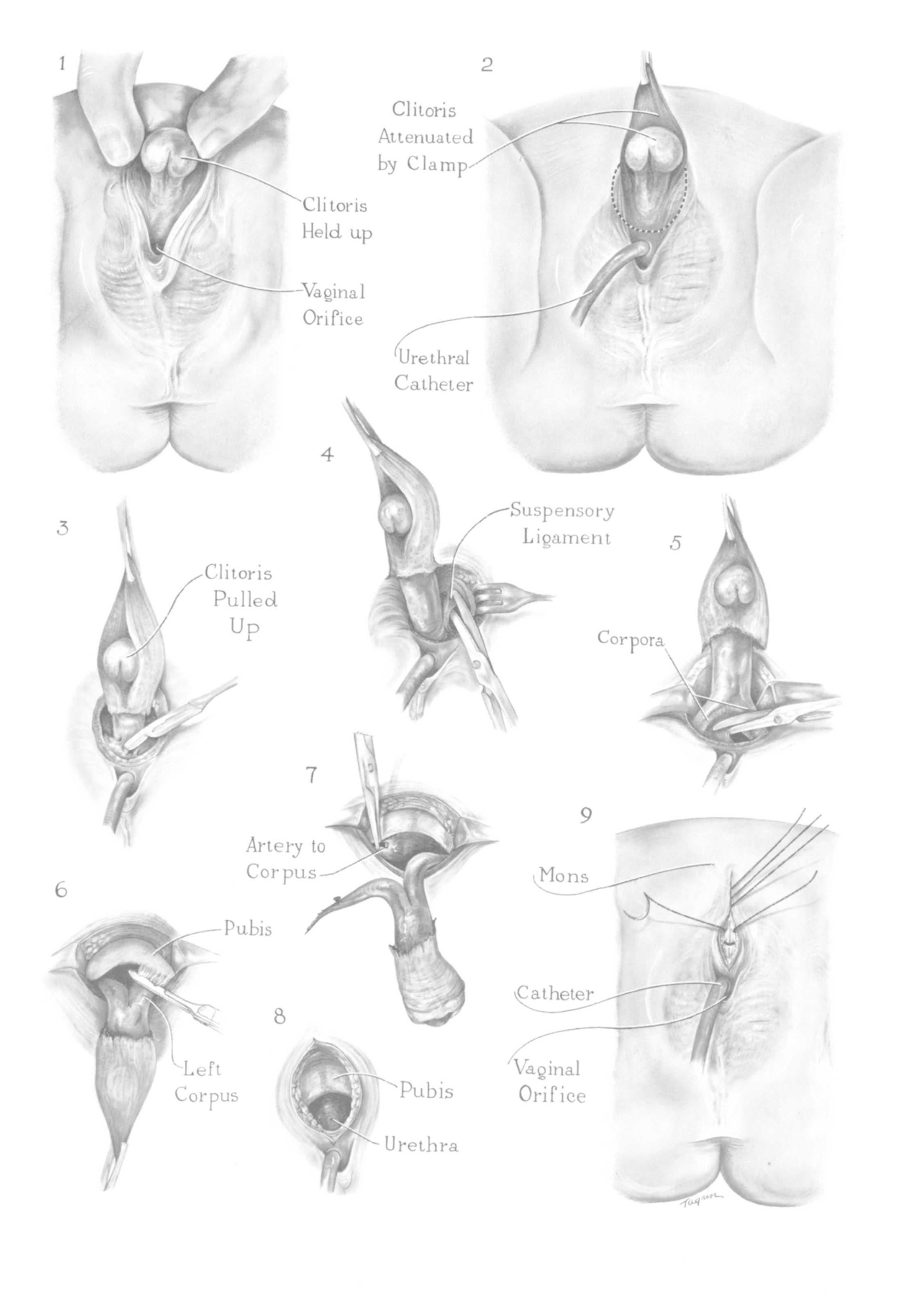 |
Illustration and text adapted from Gross, R.E., Atlas of Children’s Surgery, 1971. |
Infibulation
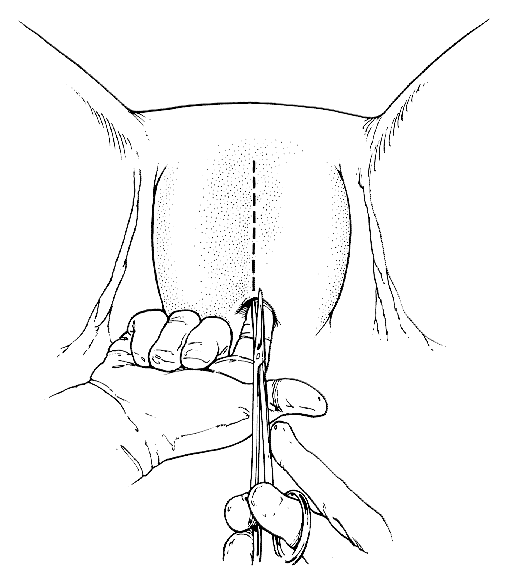
Infibulation is the name given to the closure of the natural vulval cleft, usually achieved by abraiding the labia majora so as to produce two raw surfaces that will knit together. The labia are then sewn closed ("infibulated"), leaving a single small opening at the posterior end of the vulval cleft for urination and release of menstrual blood. An infibulated woman will need to be cut open at each childbirth to allow the baby to exit. This in turn necessitates some form of assisted closure of the resulting wound following the birth.
Although apparently satsfying the "requirement" for the preservation of virginity and the prevention of rape, no known society performs infibulation alone; it is a concept that seems never to have been taken up as a cultural norm.
Pharaonic Circumcision
It is meaningful to think of Pharaonic Circumcision as a combination of two procedures, clitoridectomy and infibulation. It is the most radical form of FGM.
Mapping the distribution of FGM
Worldwide
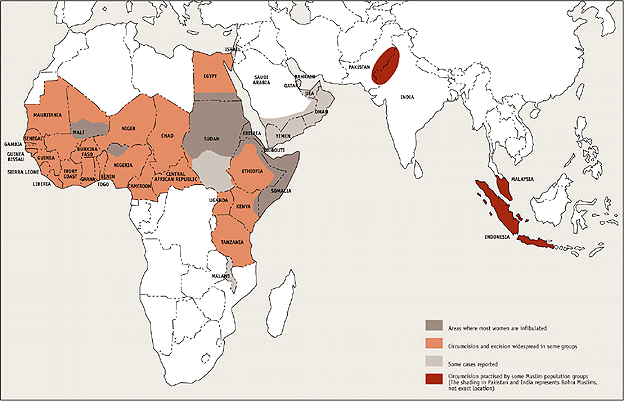
Copyright © 1999, Spinifex Press
Africa and Yemen
Somalia is listed as "no data available" due to the impossibility of conducting research there during the present lawless state of the country. It should be assumed that the incidence approaches 100%, with a high proportion of Type III.
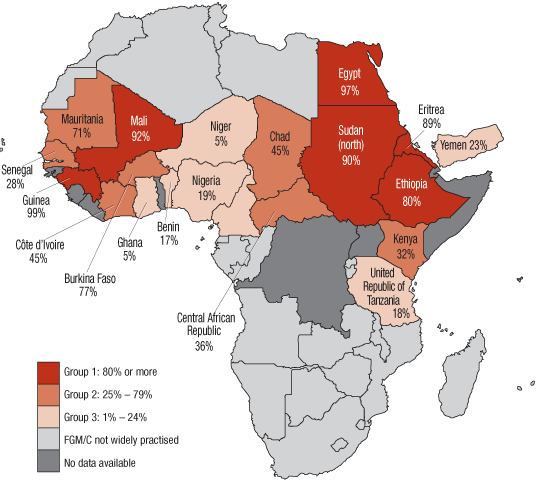
Copyright © 2007, World Health Organisation
The relationship between FGM and Islam

There is a strong correlation between the geographical distribution of FGM and those parts of the world where Islam is the predominant religion, something that has given rise to the belief that muslims are somehow obliged to perform FGM as a strict tenet of their faith.
This is inaccurate. An intellectually more robust description of the situation would be to say that the culture of FGM and the culture of Islam are frequently found co-located, without either one directly being the cause of widespread adherence to the other. As noted by the Royal Australian College of Obstetricians and Gynaecologists, the culture of FGM is an example of a "belief system" - a collective mindset that accepts certain assertions to be unquestionably true despite the absence of proof positive. Religion is also a belief system, so it is unsurprising that the two issues have become inter-twined.
No form of genital modification or mutilation is mentioned in the Qur'an, but only in a disputed hadith. Even then, the hadith only permits and does not require the process. Only one of the four Islamic schools of juriprudence or law, the Shafi'i school, orders a "slight trimming" of the hood of the clitoris, supposedly in order to enhance sexual pleasure for the woman. Most contemporary scholars reject it completely.
In Shia Islam, the practice of female circumcision has never been to remove the clitoris, and this form is outlawed by all leading Marjas that intepret Sharia traditions. The main form of surgery is to remove a small piece of the hood over the clitoris in order to increase sexual pleasure. This act is considered Mustahab and not Wajib or compulsory.
Some Muslim scholars believe female genital cutting is practiced as a result of ignorance and misconceived religious fervor rather than for reasons of true religious doctrine and any religious basis for the practice is denied. Many Arab Muslims believe the practice to be un-Islamic.
Shaykh Faraz Rabbani of SunniPath states "As for excision... or other harmful practices [including those that take sexual pleasure away from women], which have become culturally widespread, none of these are in any way permitted."
A few others, like the Egyptian Mufti Sheikh Jad Al-Hâqq 'Ali Jad Al-Hâqq issued, in 1994, a fatwa stating: "Circumcision is mandatory for men and for women. If the people of any village decide to abandon it, the [village] imam must fight against them as if they had abandoned the call to prayer."
Al-Azhar University has issued fatwas in 1949, 1951 and 1981 which endorsed the practice. [Gad-al-hak: Khitan al banat, pp. 3119-3125, quoted in Sami A. Aldeeb, Mutiler, Institut Suisse de Droit Comparé, 1993, p. 191.] However, in March 2005, Dr Ahmend Talib, Dean of the Faculty of Sharia, Al Azhar University, Cairo, said: "All practices of female circumcision and mutilation are crimes and have no relationship with Islam. Whether it involves the removal of the skin or the cutting of the flesh of the female genital organs... it is not an obligation in Islam."
Photographs of FGM
Warrantably genuine photographs of FGM are notoriously difficult to obtain; many images on the Internet are likely to be the product of digital manipulation. The following are realistic but only the one credited to Mona Ellaithi can be guaranteed 100% genuine, coming as it does from a verified academic source.
Type 1 FGM
|
Type 2 FGM
|
Type 3 FGM
|
 |
 |
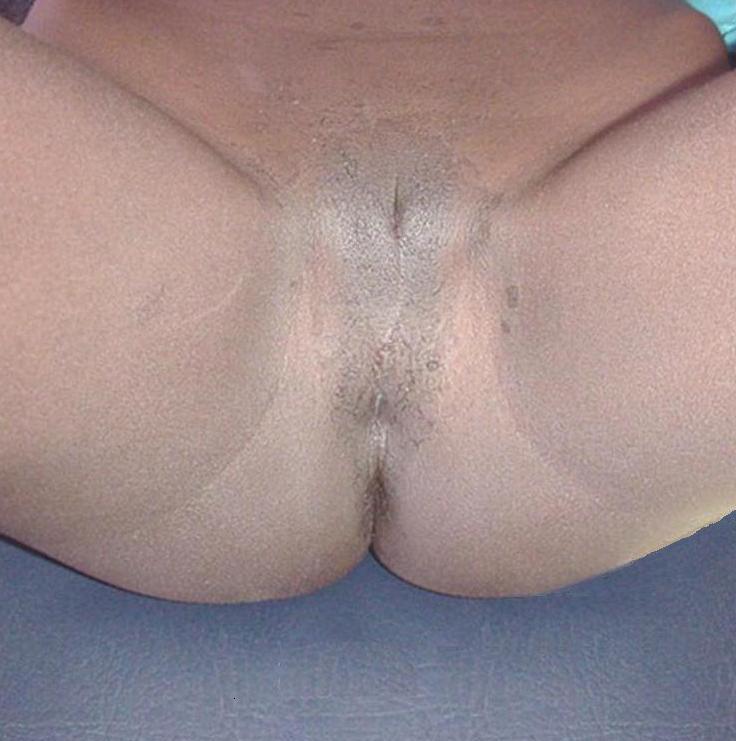 |
© Unknown |
© Unknown |
© 2006, M Ellaithi. |
The image depicting Type 3 FGM (Pharaonic circumcision) shows the consequences of Sudanese-traditional FGM performed during childhood on an XY (Male) child with an intersex condition that resulted in apparently female genitalia. The individual was raised as a girl, underwent Type 3 FGM in accordance with local tradition and presented at clinic as an adult female with delayed puberty.
|
Pre-pubertal FC/FGM in Indonesia.
The following images were taken in April 2006 in a primary school in Bandung, Indonesia on the occasion of the mass circumcision of 248 pre-pubertal girls arranged by the
Yayasan Assalaam Islamic sect. This organisation was reported at the time to pay parents a bounty of 80,000 Indonesian Rupiah and a bag of free food for each girl brought to them for circumcision – the cash sum alone representing several days wages for the average working man. It is unclear what form of cutting resulted; all female circumcision was at the time illegal throughout the Republic of Indonesia.
In 2011 the Indonesian Government removed the total ban on female genital cutting and issued guidelines to doctors suggesting how to do it. That advice was to avoid cutting any part of the clitoris itself. The official justification for removal of the total ban was that it was widely ignored and was leading to more radical procedures taking place in unregulated circumstances.
Acknowledgements
The following resources were used in the preparation of this web page:
 |
 |
 |
Female Genital Mutilation - A joint WHO/UNICEF/UNFPA statement. Geneva, World Health Organisation 1997. |
 |
 |
Female genital mutilation - Information for Australian health professionals. Booklet published by The Royal Australian College of Obstetricians and Gynaecologists, 1997. |
 |
 |
Manresa, K. and Rioja, I.R., The Day Kadi Lost Part of Her Life. Melbourne:Spinifex Press, 1999. |
 |
 |
Institut Suisse de Droit Comparé (Swiss Institute of Comparative Law) Op. cit. supra. |
 |
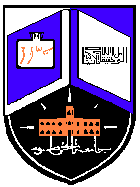 |
Ellaithi, M. et al, Female genital mutilation of a karyotypic male presenting as a female with delayed puberty. BMC Women’s Health 2006, 6(1):6 |
 |
 |
The Observer newspaper, article published 18.November.2012. |
Copyright © 1992 - , All Rights Reserved CIRCLIST.








